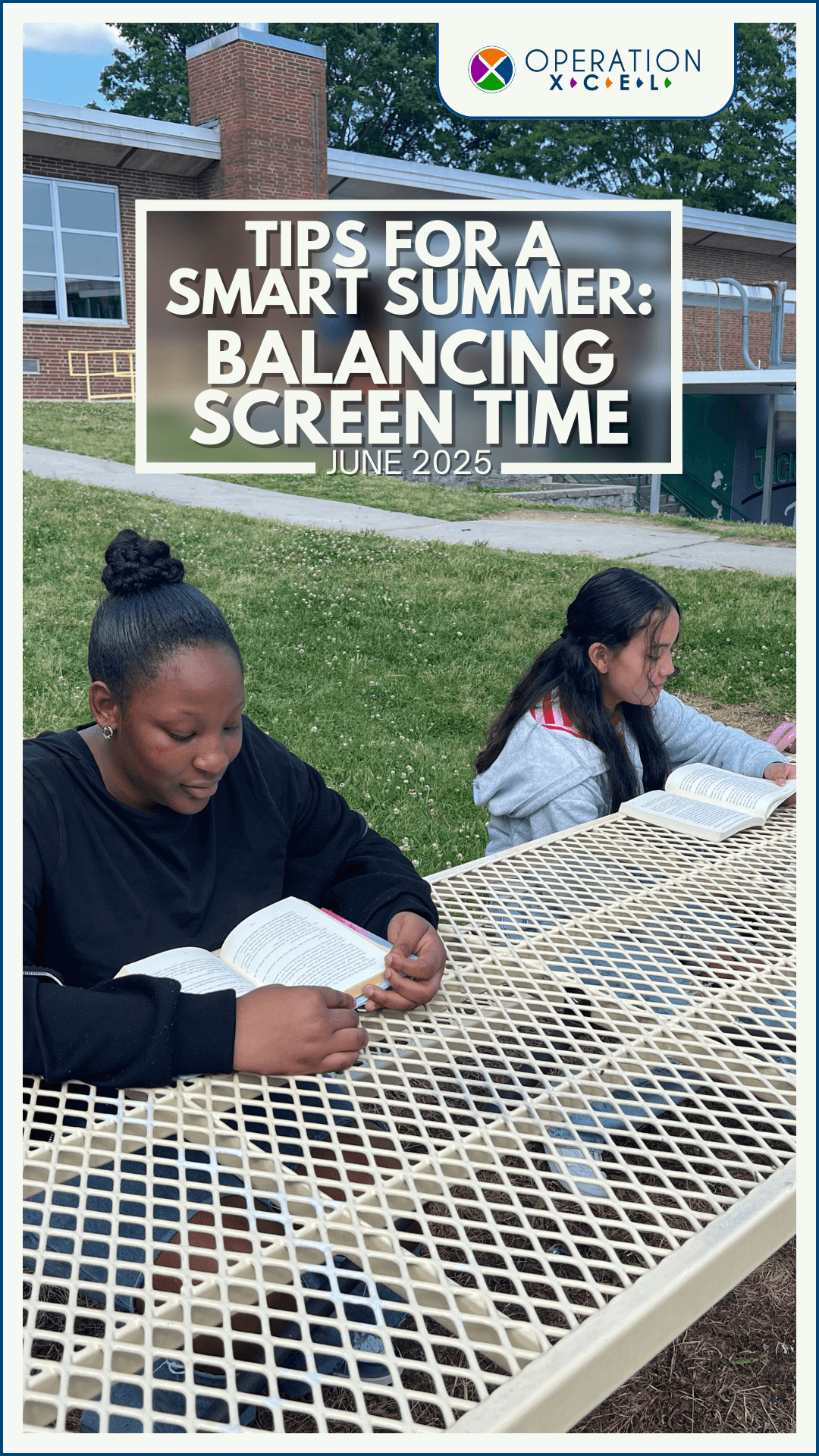
Strategies for Parents to Help Children Balance Play and Learning
Summer break is a time for kids to relax and recharge, but without structure, it can easily turn into endless hours of TV and video games. While some downtime is healthy, too much screen time can take away from valuable learning opportunities and real-world fun. As a parent, you can help your child strike a balance between play and learning with a few simple strategies.
1. Set Screen Time Limits
Establish daily or weekly screen time rules and stick to them. Use tools like timers or device settings to help your child build healthy habits. Be consistent but flexible, allowing for occasional exceptions like family movie nights.
2. Create a Daily Routine
Build a summer schedule that includes time for reading, outdoor play, creative projects, and chores. A predictable routine gives kids a sense of structure—and keeps learning part of the day.
3. Turn Everyday Activities Into Learning
Cooking together? Practice math with measurements. Gardening? Explore science and nature. Even running errands can be a chance to read signs, count change, or practice conversation skills.
4. Encourage Reading
Make trips to the library part of your weekly routine. Let your child choose books that interest them and carve out quiet reading time each day. Join a summer reading challenge or create your own at home.
5. Explore Educational Apps and Games
If your child is going to be on a device, guide them toward high-quality educational content. Many apps and websites make learning fun—just make sure screen time stays balanced with offline activities.
6. Be a Role Model
Show your child that learning doesn’t stop during summer. Read a book, take up a new hobby, or visit a museum together. Your example will inspire curiosity and a love of lifelong learning.
With a little planning and encouragement, you can help your child enjoy a fun, enriching summer that keeps their brain active—and keeps screen time in check.
A considerable amount of research is being conducted to investigate the impact of excessive screen time and social media usage on young individuals. Although not all screen time is detrimental, particularly when it serves educational purposes or fosters social connections, excessive or unregulated usage has been associated with various issues.
1. Mental Health and Emotional Well-being
- Increased risk of anxiety and depression: Studies, including research from the American Academy of Pediatrics (AAP) and JAMA Psychiatry, have found associations between high screen/social media use and symptoms of anxiety and depression, especially in teens.
- Body image issues: Platforms like Instagram and TikTok can contribute to poor self-esteem, particularly in girls, due to exposure to unrealistic body standards and curated images.
2. Sleep Disruption
- Blue light exposure from screens can interfere with melatonin production, disrupting natural sleep cycles.
- Youth who use screens, especially before bed, often report poorer sleep quality and shorter duration, which affects concentration, mood, and academic performance.
3. Attention and Cognitive Development
- Reduced attention span: Fast-paced, constantly stimulating content (e.g., short videos, quick game rewards) may affect a child’s ability to focus on slower-paced, sustained tasks like reading or schoolwork.
- Some research, including work from the NIH’s Adolescent Brain Cognitive Development (ABCD) Study, suggests that children who spend more than 7 hours a day on screens may show premature thinning of the brain’s cortex, which is related to critical thinking and reasoning.
4. Academic Performance
- Excessive recreational screen use (not educational) has been correlated with lower grades and reduced academic engagement, especially when it replaces homework or reading time.
5. Social Skills and Relationships
- Overuse of screens, particularly passive screen use (like endless scrolling), can reduce face-to-face interactions, impacting the development of social and communication skills.
- However, moderate use of social media can help some teens feel more connected, especially if it’s used to maintain real friendships.
Key Takeaways for Parents
- Moderation is key: The AAP recommends no more than 1 hour of recreational screen time per day for children aged 2–5, and consistent limits for older children.
- Quality matters: Choose age-appropriate, educational, and interactive content.
- Model healthy habits: Kids often mimic adults’ screen use. Be mindful of your own habits.
- Encourage tech-free zones and times, such as during meals and before bed.

